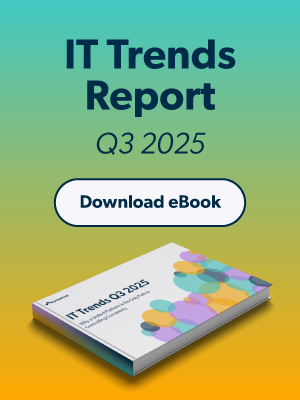Today’s workplaces are all over the map. Some people come into the office daily, while some adopt a hybrid schedule. There’s even a portion working fully remote.
Our most recent survey shows that 57% of U.S. companies require full-time in-office work, compared to 41% in Australia and 42% in the U.K. This difference creates a range of operational styles under one umbrella. This is challenging IT teams to keep user experiences consistent while safeguarding data.
Despite these hurdles, it’s absolutely possible to build a streamlined IT environment where employees stay secure and productive, no matter where they log in from. 😃
6 Helpful Steps to Maintain Consistency
Consistency, scalability, and clear communication across the board can be ensured by:
⚡ Creating a centralized policy framework
Document policies that address everything. This could include acceptable use and data classification, device management, and incident reporting.
This central repository of guidelines must remain flexible. It should be able to accommodate various work arrangements and evolving regulations.
⚡ Standardizing device provisioning and configuration
Develop “golden images” for company-owned devices. These will be complete with pre-installed security software, productivity apps, and VPN configurations.
If your SME allows for BYOD, mandate enrollment in a UEM platform.
⚡ Strengthening identity and access management
SSO and MFA add extra layers of defense against phishing and unauthorized logins. Consider RBAC so that only the right people can see or edit sensitive data, reducing accidental (or intentional) data mishaps.
⚡ Unifying security measures
Standardize on a single suite of endpoint protection, firewalls, and intrusion detection tools.
Automate patch management to ensure devices—both on-site and remote—stay current with the latest updates.
⚡ Investing in data governance and backup procedures
Establish clear protocols on how data is classified, stored, and shared, emphasizing encryption both at rest and in transit. Centralized backup solutions, whether on-premises or in the cloud. This will ensure rapid recovery in the event of a breach or hardware failure.
Get More SME Insights Today
Regardless of where your team clocks in, if you follow these steps you’ll deliver a smooth user experience that fosters collaboration and productivity. 🧘
We’ve got lots more insights that will help strengthen your organization’s security and efficiency!
Check out JumpCloud’s Q1 ’25 SME IT Trends report and take your IT program to the next level. 👉




